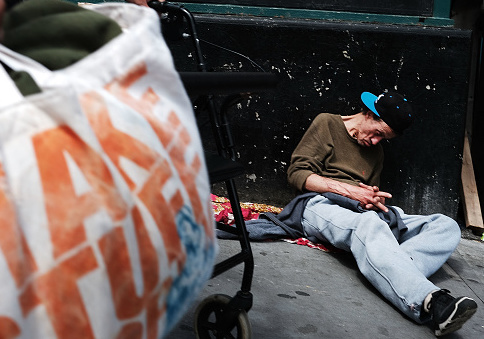Deaths from opioid-driven hospitalizations quadrupled between 2000 and 2014, a new study concluded, painting a grim picture of the decades-long opioid epidemic that killed more than 42,000 Americans in 2016.
The study, published in the December issue of Health Affairs, is the first nationally representative evaluation of opioid-driven mortality rates. Using data from hospitals nationwide, it concludes that the opioid-driven hospitalization mortality rose from 0.43 percent in the period between 1993 and 2000 to 2.02 percent in 2014, an average increase of 0.12 percentage points per year.
Initially remaining constant between 1993 and 2000, the opioid-driven mortality rate doubled to about 1 percent between 2000 and 2007. It then doubled again between 2007 and 2014, meaning that the rate of increase in the rate has also grown. Today, about 7,000 people are treated in emergency rooms for opioid misuse each day.
For comparison, the mortality of hospitalization due to other drugs remained unchanged over the 1993-2014 time period, while the mortality rate for all other other hospitalizations actually decreased. In practice, that means that in 1993, the rate for all other hospitalizations was five times that of opioid-driven hospitalizations; by 2014, opioid-driven hospitalizations had outpaced all other hospitalizations.
Over the studied period, the number of admissions for opioid-related issues remained basically constant; what changed was the kind of issues. Specifically, hospitalizations for abuse declined by about 0.01 per 1,000 people per year, while hospitalizations for overdose and drug poisoning rose at the same rate.
Today, drug poisoning is the leading cause of injury death in the United States, outpacing homicide, suicide, and car accidents.
The increase in opioid hospitalization mortality provides further evidence that, although it has only recently achieved public attention, the opioid epidemic has been quietly devastating American communities for the better part of the past twenty years. One recent study determined that the rate of opioid abuse—approximately 13 percent of Americans over age 12 admitted to abusing opioids at some point in their lives—was in fact constant between 2003 and at least 2014.
The study also reveals the communities disproportionately struck by opioid addiction and related death. Disproportionately high and fast-growing rates of opioid-driven hospitalizations occurred in patients ages 50-64, white patients, patients in the lowest income quartile, and patients in the Northeast. Among older Americans, Medicare recipients were particularly hard hit: "Medicare beneficiaries went from the smallest proportion of these hospitalizations in the 1990s to the largest share by the mid-2000s."
Study author Dr. Zirui Song, an assistant professor of health-care policy at Harvard and a physician at Massachusetts General Hospital, suggested three potential underlying causes for the rise in mortality. These were the frequency with which less severe cases were being treated in the field using overdose-reversing medication like naloxone; the rise in the cost of prescription drugs versus the cheaper but deadlier heroin; and the proliferation of powerful synthetic opioids like fentanyl, the leading culprit in overdose death in 2016.
"Until community-based effort to tackle opioid misuse have taken root, treating opioid addiction and better equipping hospitals to care for patients with increasingly severe opioid abuse may help the health care system combat the rising mortality rates of patients hospitalized for opioid use disorders," Song wrote.
The opioid epidemic remains a serious public health issue. Most recently, the CDC determined the epidemic be largely responsible for the two-year decline in U.S. life expectancy, the first such year-on-year decline since 1962-63.
